3D printing materials vary for different 3D printing technologies. And, there are separate ones for the SLS Printing process too. There are a few options when wanting to print with an SLS material.
The most common of all is Polyamide 12 (PA-12) which is also known as Nylon 12. There are other materials too such as PA- 11, PEEK, and others.
However, none of the materials have gained as popularity as PA12 shares. This is because of its high strength and favorable properties that make printing with PA12 so beneficial.
Users can also choose the materials which are formed after mixing certain additives to the polyamide powder. There are combinations of glass, fiber, and other variants available.
However, this mixing leads to other problems such as brittleness. But these do have their own place in the 3D printing arena. Many applications require these SLS materials for desired results.
Depending on the purpose, one must choose the right material. Otherwise, the end parts won’t follow the traits they must. And, end up destroying the entire project for a toss.
If you own an SLS 3D Printer and do not know which material to choose for your task, you must check out the detailed information on each of the materials available for SLS 3D printing.
The article comprises basic and important details of each of the major SLS Materials. In order to help readers in picking the right option, the guide also provides the application of different SLS material based on their overall properties.
Types of SLS Material
There are almost six major SLS materials available today. You may find other variations too. However, the ones listed below are the most common choices of users for different applications.
Polyamide 12
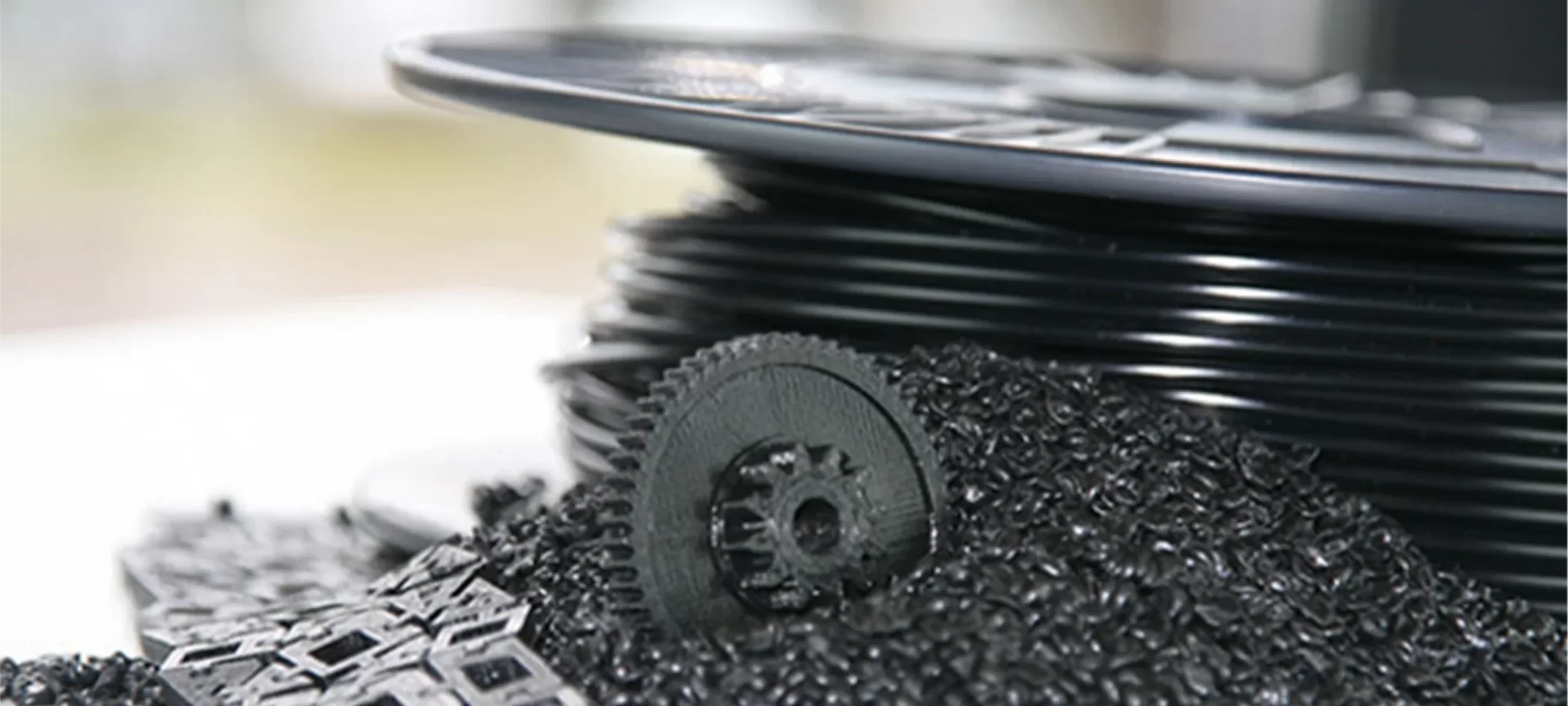
The material is known by different names. So, do not get confused. You can also call it Nylon 12 or PA 12. And, as stated before, this one is the most popular among the list of other choices.
Being exceptionally great at its thermal and mechanical properties, the material has by far been able to satisfy its users in terms of end results.
PA 12 is even resistant to different chemicals. Hence, providing users with longer stability of the parts. It is being used for creating functional prototypes and goes well for printing end products.
You can also find the biocompatible PA 12 materials that are best for creating food-safe products.
The standard PA 12 produces a rough surface. Hence, it requires post-processing to smoothen the parts later after printing.
To sinter the polyamide powder together, SLS 3D printing uses a laser source. This process melts and connects the particles to form the layers.
Application of PA 12
PA 12, is great at providing strength and resistance to chemicals, it is used in industries for making prototypes. Especially the functional ones. SLS 3D printing is also cheaper when compared to the other specialized 3D printing technologies for industries. Plus, it can also cater to the needs of printing finished products.
Polyamide 11 (PA 11)
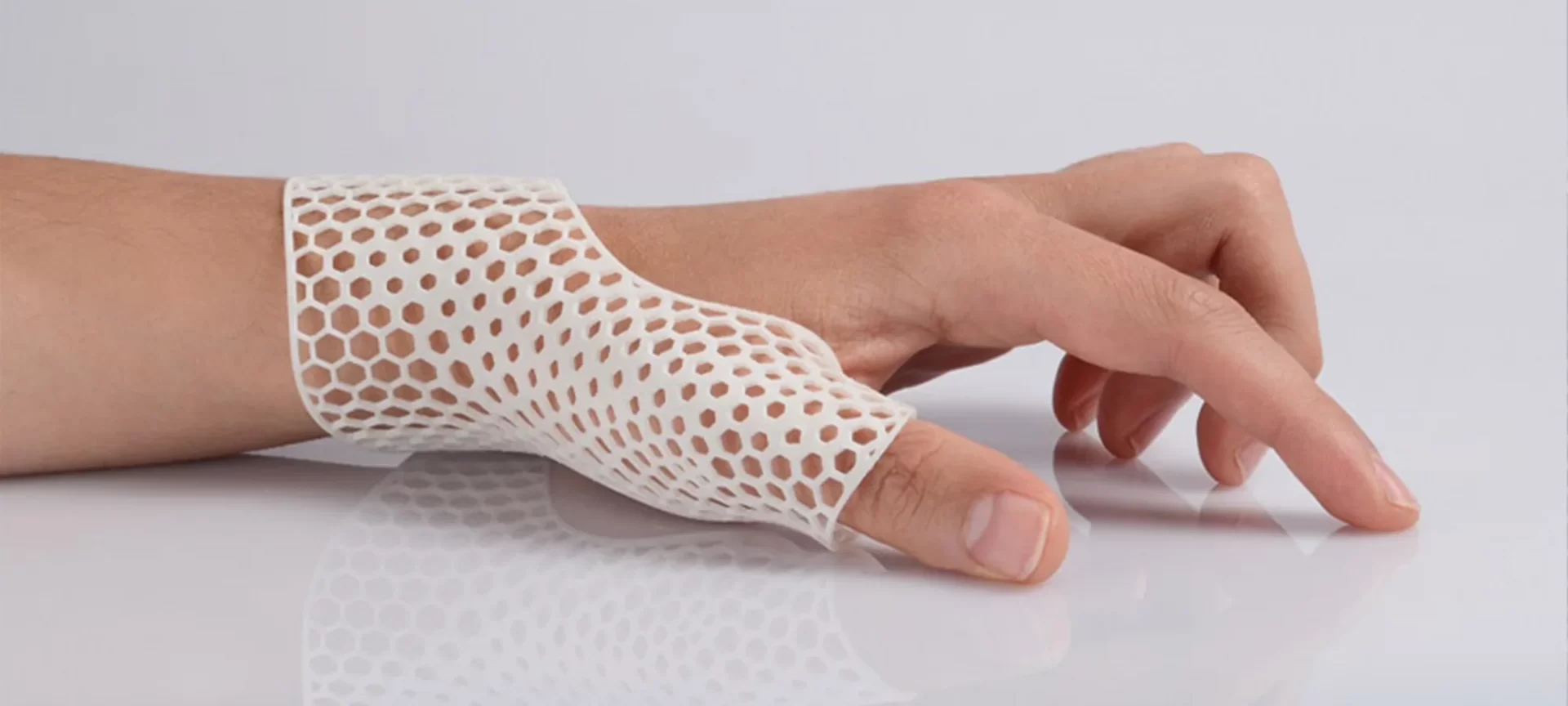
Unlike PA 12, this material offers higher elasticity. And, it also helps in achieving isotropic parts. Not very different from PA 12 in terms of mechanical properties, it does vary in a few aspects.
And, the most important one is that the material is biodegradable. Hence, it does not impact the environment as the other materials do.
The material is created using renewable sources such as vegetable oil. Moreover, it accounts for enhanced thermal and chemical resistance when compared with PA 12. In other words, it is least affected when exposed to light or weather changes as well as UV light. Usually, the material is black in color and is very finely powdered.
Application of PA 11
Because of its strength, the material is widely used for automotive industries. Companies manufacture fuel lines, brake hoses, and various other automotive parts.
Within the engineering industry, PA 11 works best for making protective layers for water pipes. Also, other application includes hammerhead, coatings for racks, wires.
Also, the bicycle derailleurs are also made of PA 11. One can utilize the material for producing sports shoe soles because of its resistance to abrasion.
TPU
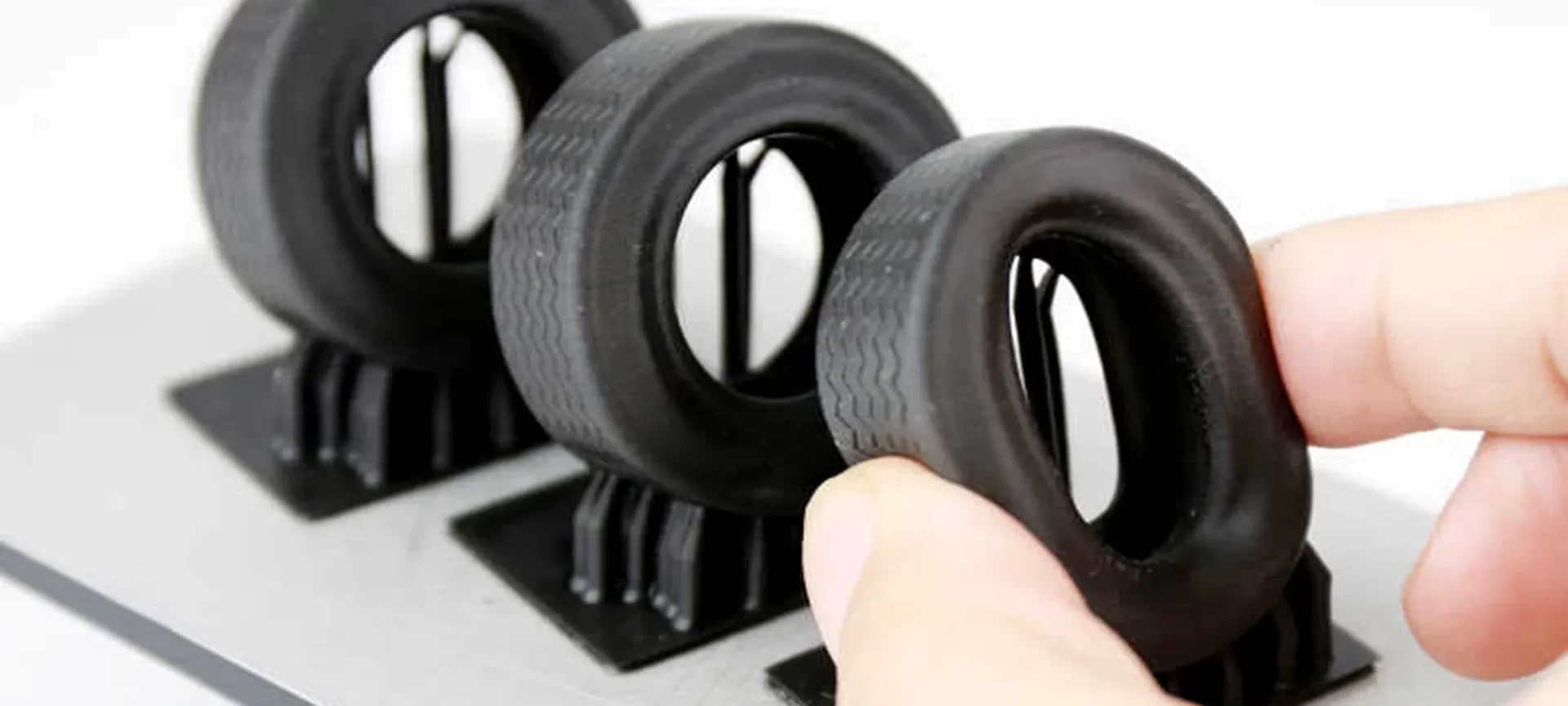
If your parts require higher elasticity, you must choose TPU. The material offering high strength coupled with longer elasticity is perfect for many functional prototypes as well as finished products. You can expect it to offer rubber-like elasticity. Plus, it offers high resistance to wear and tear.
The material is very popular. And, that is because of its perfection for smoother surface finish and attention to finer details.
Application of TPU
TPU is used widely for a variety of applications along with automotive, aerospace, medical as well as luxury industry. It can create amazing results with high elasticity and flexibility.
Hence, make up for the manufacturing of hoses, bumpers, grips, gaskets and seals, bellows, tubes, etc. The material is widely used within the toy niche.
You can also easily find the involvement of TPU for Footwear modeling. And, it does not stop here. There are plenty of other applications for TPU and for the right reasons.
Carbon Fiber-Filled Nylon
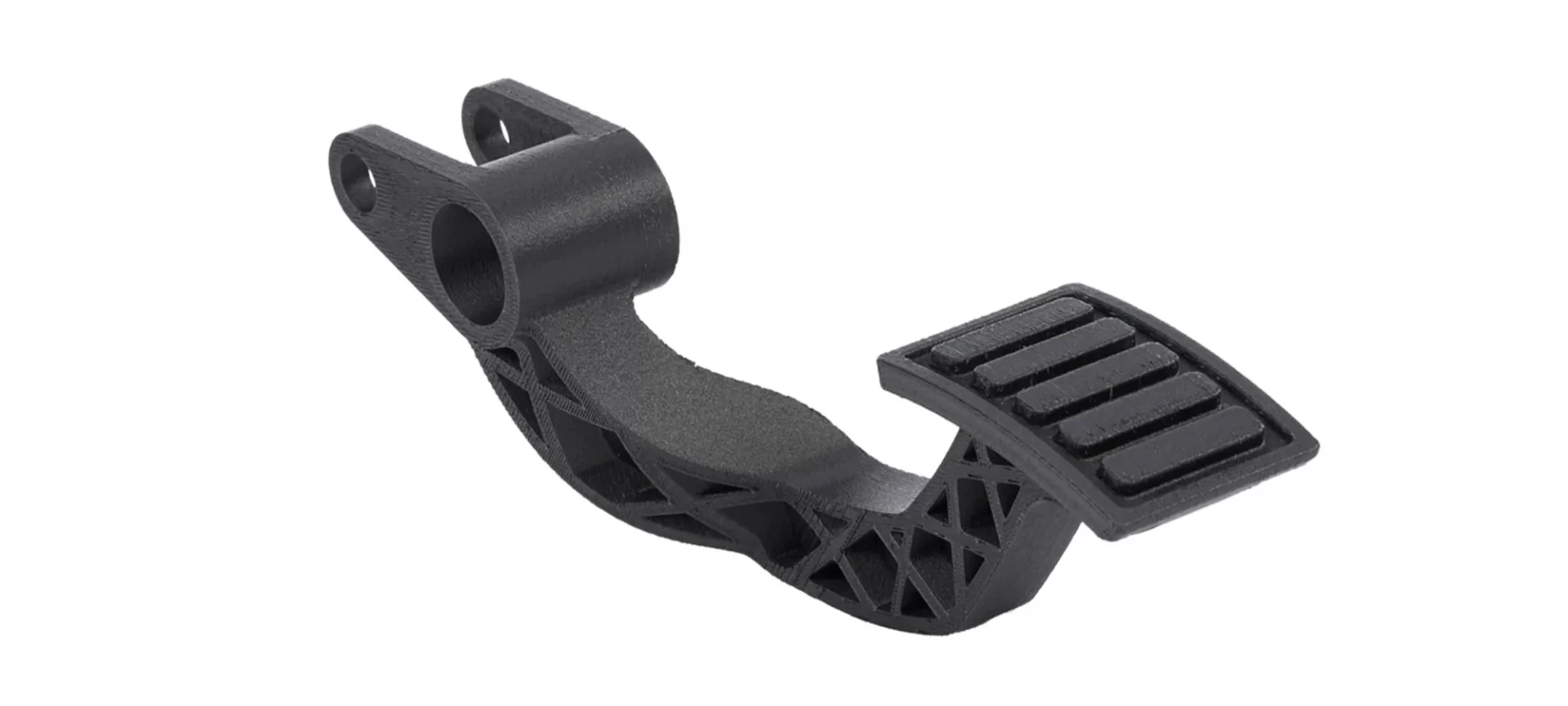
To achieve varying mechanical and chemical properties, as stated before, the polyamide powder is mixed with different additives. This results in enhanced overall properties of the parts printed using these materials.
And, one additive that is very common is the carbon fiber. For this material, the polyamide powder is combined with the carbon fibers to achieve the desired combination.
The results are mesmerizing. It offers an impeccable weight-to-strength ratio along with great stiffness. But it does trade off those properties with the isotropic nature of polyamide powder.
This means, that the parts printed with these additive mixed powders are anisotropic. Hence, the properties of the parts would differ when measured in different directions.
This is the one major reason, in spite of having high stiffness and great weight to strength ratio, these materials are limited to few applications.
On the plus side, the material is highly resistant to extreme temperature as well as wear and tear. It offers high tensile strength.
Application of Carbon Fiber Filled Nylon
Being anisotropic, this material has a limited but important role within the manufacturing industry. For instance, it is used for creating under the hood components. You can also find wind tunnel models prepared using Carbon fiber filled Nylon.
In other words, the material is required when preparing parts that require superior thermal properties. Along with the maximum need for extremely high SLS strength to weight ratio.
You certainly can create high performing parts where anisotropic behavior does not count.
Glass Filled Nylon
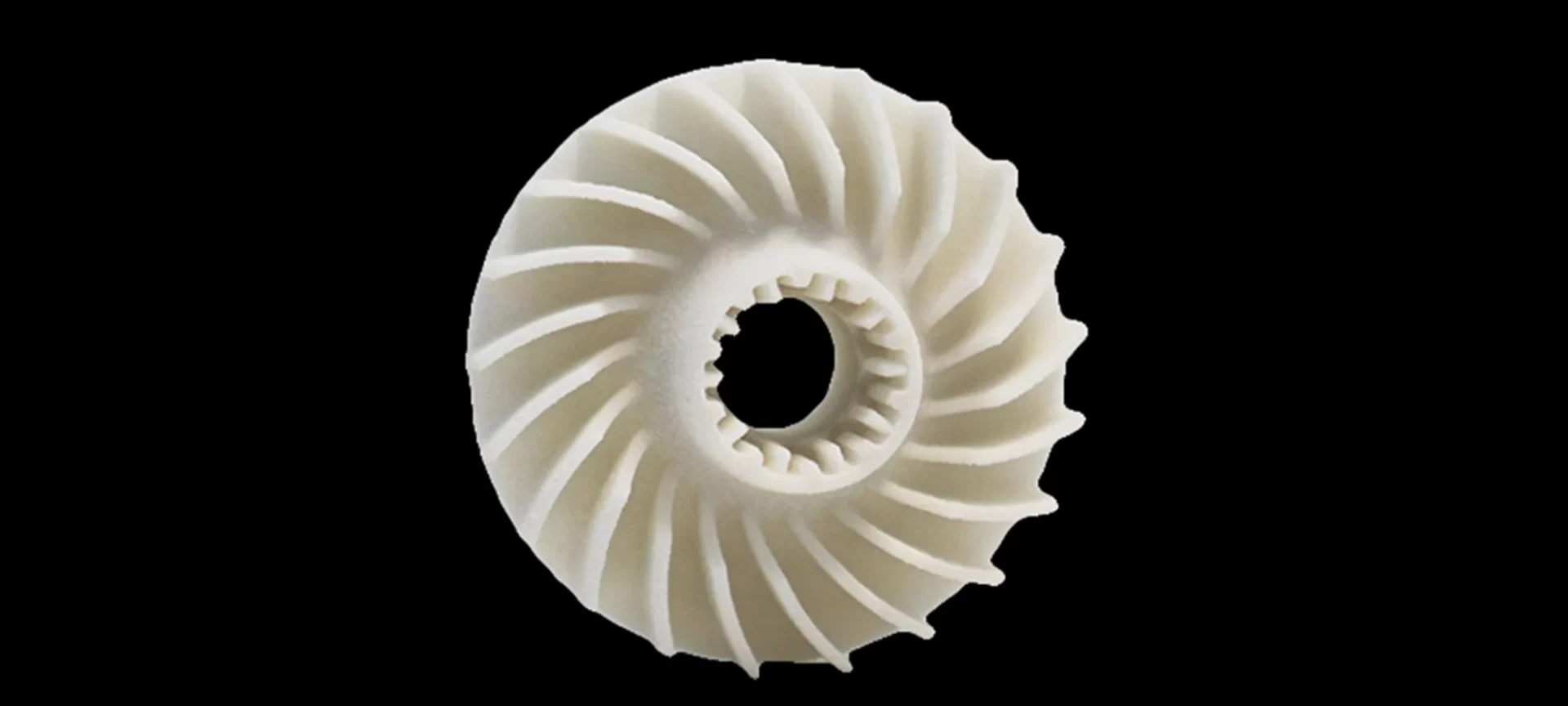
Once again, a composite of Polyamide powder that exhibits amazing overall properties. When working with SLS 3D printers, this material is really handy when needing parts with high tensile strength.
The material is also great in providing resistance to wear and extreme temperature. Glass-filled nylon has become a viable choice for many applications that do not worry about its anisotropic behavior. Yes, Glass-filled Nylon also creates parts that have varying properties along the different lengths and breadths.
When preparing these materials, one can combine the glass powder in varying percentages, ranging somewhere between 10 percent to 40 percent. This percentage of composition highly impacts the brittleness of the parts created using the SLS material. Also, the strength of the parts depends on the percentage of glass powder in the composite.
Application of Glass Filled Nylon
Starting from functional prototypes, the material is used for preparing finished products as well. You can 3D print housings as well as enclosures structures.
This is because of the great surface finish that avoids the accumulation of dust. Hence, it is used for parts that encounter dust a lot more than usual
Along with these products and finished goods, Glass-filled Nylon is also best for producing consumer sporting products.
You can even involve the material for printing complex parts for prototypes including functional prototypes. However, do not forget that the material cannot print fine details very optimally.
This is because of the fact that the surface of the parts is restricted to 100 µm. Mainly, the material plays its role to its best when needing desired stiffness and resistance to high temperature.
The various uses of this composite material make it one of the widely chosen materials for SLS 3D printing.
Aluminum Filled Nylon (Alumide)
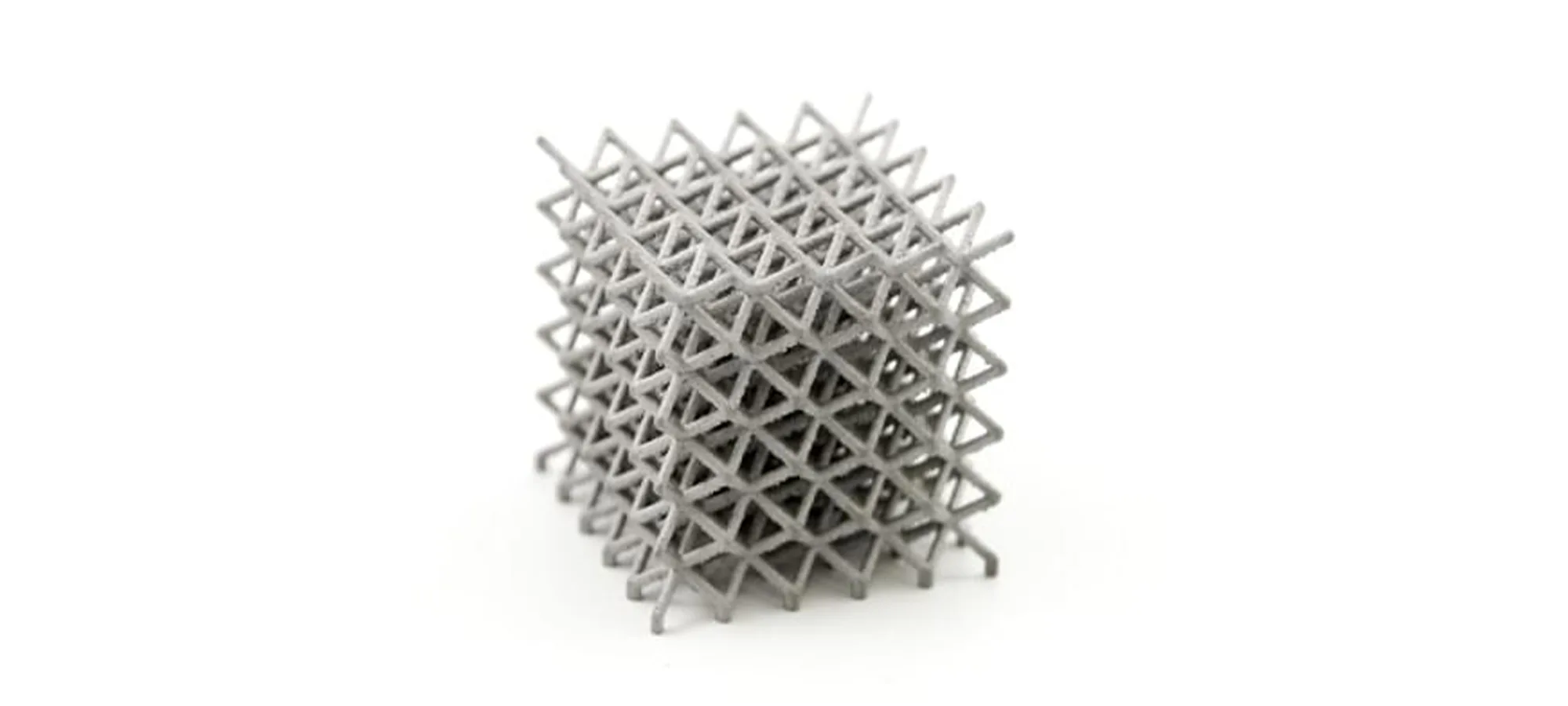
This again is a composite made with mixing Polyamide powder with aluminum powder. The resultant SLS material offers a metallic appearance along with amazing metal like stiffness.
Using the SLS material, one can create non-porous components. Hence, the parts are highly resistant to extreme temperatures. Yet, these can be machined without any hassle.
These two components, the aluminum powder, and polyamide powder go hand in hand perfectly because of their similar physical properties. And, this is one of the major reasons why Alumides are great at providing amazing parts with complex as well as enclosed designs.
Application of Alumide
Alumide isn’t very expensive and is highly affordable. Plus, it offers durable parts. With such flexibility of designs, and is one of the popular SLS material, Aluminium filled Nylon material makes a lot of things possible. You can design complex models without worrying about spending tons of money.
The SLS material can create ornamental objects where you want to obtain a metallic finish. Moreover, you can also 3D print mechanical parts that aren’t going to encounter high stress. Hence, it is best both for functional prototypes as well as finished products.
Alumide isn’t waterproof. However, it does offer water-resistant properties. Hence, the parts printed using Alumide won’t get destroyed when touching the water surface. However, you cannot think of putting the parts submerged inside the water for a longer period.
Moreover, it is heat resistant to a certain limit. For instance, if you expose the parts printed with Alumide to heat above 120 degrees Celsius, the parts may deform. And, the results would be significantly visible.
Why Use SLS 3D Printing?
Apart from being a sustainable and affordable option for industrial 3D printing applications, a lot of credit goes to the selection of material available with SLS 3D printing.
The technology works amazingly because of its high resistant materials that are capable of producing parts for differing applications.
Air ducts for aerospace are created with Nylon and there are right reasons for the same. The materials with varying properties offer flexibility to design parts for different niches desiring unique results.
Also, the functionality along with the versatility of the SLS 3D printing mostly depends on the materials it works with. Apart from Nylon, the composites are also well researched and developed to provide unmatched output. These are high standard thermoplastics.
Moreover, the layers created by sintering powder particles together have the closest density of 100 percent. If created using any other 3D printing method, it would be highly expensive and time taking.
You can count on the SLS materials for producing hinges, mechanical joints, snap fits, and whatnot.
And, nylon is a very common material available widely across the globe. And, these powder particles are reusable as well. Most of all, when printing with these SLS materials, one does not require to create support structures.
Hence, the post-processing requirements are reduced significantly. However, you must smoothen the surface of parts created with most of the SLS materials. Well, that is not a very tough job.
The Conclusion
SLS 3D printing has become a huge hit among industries. It carries great popularity for the variety of materials it provides and the amazing resistance to temperature it offers. Most of the materials are also wear and tear resistance. And, PA 11, bringing flexibility under the hood of the technology.
There are so many reasons why technology is admired for specialized applications and complex needs. From parts for aerospace to finished products inside the houses, the technology has come a long way.
And, all thanks to the SLS material. Without Nylon and its composites, it would have been close to impossible to bring SLS 3D printing to the forefront.tion: absolute; top: -10000px;” />







